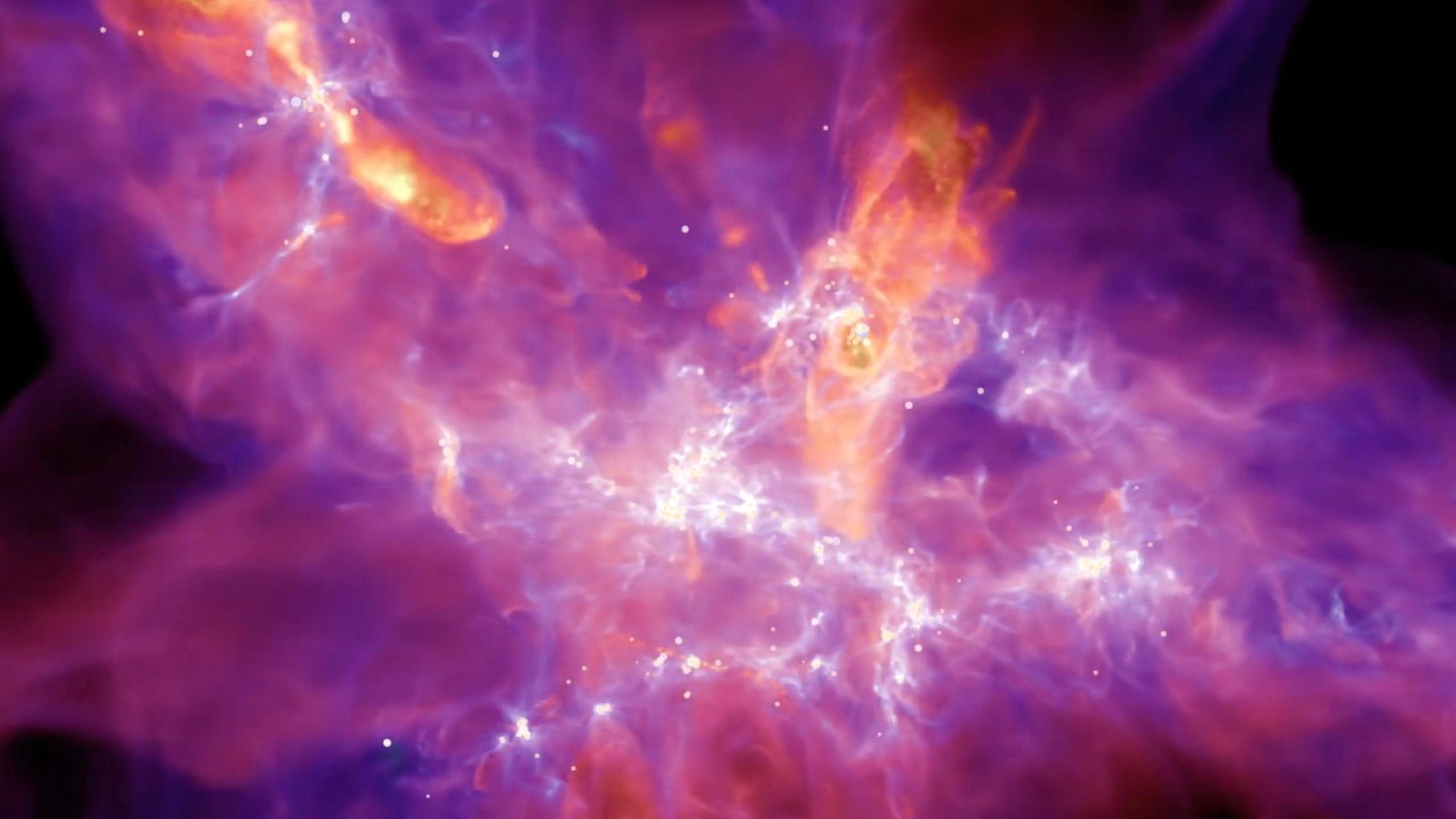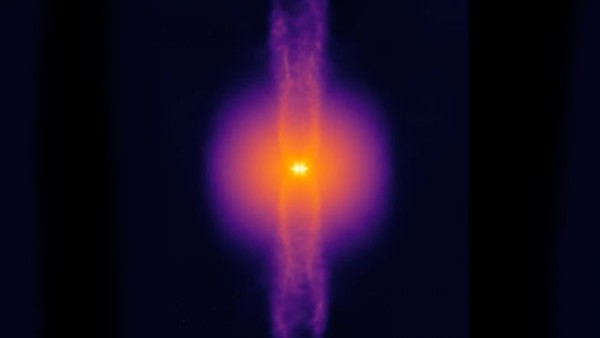Watch this stunning new simulation of a star being born
The simulation can take three months to run on one of the world’s fastest supercomputers.

Astrophysicists have developed the first high-resolution 3D model of a gas cloud coalescing to form a star — and it's mind-blowing.
The "Starforge" model (which stands for “star formation in gaseous environments'') allows users to fly through a colorful cloud of gas as it pools into stars all around them. Researchers hope that the visually stunning simulation will help them to explore the many unsolved mysteries of star formation, such as: Why is the process so slow and inefficient? What determines a star’s mass? And why do stars tend to cluster together?
The computational framework is able to simulate gas clouds 100 times more massive than was previously possible and will enable scientists to model star formation, evolution and dynamics while taking into account things like jets, radiation, wind and even supernovas — the explosions of nearby stars.
"How stars form is very much a central question in astrophysics," senior author Claude-André Faucher-Giguère, an astrophysicist at Northwestern University, said in a statement. "It’s been a very challenging question to explore because of the range of physical processes involved. This new simulation will help us directly address fundamental questions we could not definitively answer before."
Related: The 12 strangest objects in the universe
Stars can take tens of millions of years to form — growing from billowing clouds of turbulent dust and gas to gently glowing protostars, before materializing into gigantic orbs of fusion-powered plasma like our sun. While studying the night sky enables astrophysicists to glimpse brief snapshots of a star’s evolution, they need to use an accurate simulation to view and study the full process.
"When we observe stars forming in any given region, all we see are star formation sites frozen in time," co-author Michael Grudić, a postdoctoral fellow at Northwestern University, said in the statement. "Stars also form in clouds of dust, so they are mostly hidden."
Sign up for the Live Science daily newsletter now
Get the world’s most fascinating discoveries delivered straight to your inbox.
The model is enormous, and it can take three months to run one simulation on one of the world’s largest supercomputers, housed at the Texas Advanced Computing Center. It is the sheer size and computational complexity that makes this new model’s predictions so much more accurate, according to the researchers.
"People have been simulating star formation for a couple decades now, but Starforge is a quantum leap in technology," Grudić said. "Other models have only been able to simulate a tiny patch of the cloud where stars form — not the entire cloud in high resolution. Without seeing the big picture, we miss a lot of factors that might influence the star’s outcome."
The simulation starts with a cloud of gas — up to many millions of times more massive than our sun — floating in space. As time passes, the gas cloud evolves. It swirls around itself, forming larger structures before breaking apart again. From this creative destruction, small pockets of gas remain that, drawn in by gravity and made ever hotter through constant friction, eventually become stars. The climax of a star’s birth is when two enormous jets of gas are launched outward from its poles at high speed — piercing the clouds around it.
Astrophysicists used the simulation to understand the role these gas jets play in determining a star’s mass. When they ran the simulation without accounting for the jets, they got stars that were much bigger than usual — roughly 10 times the mass of the sun. Adding the jets back in produced more realistically sized stars, which were around half the mass of the sun.

"Jets disrupt the inflow of gas toward the star," Grudić said. "They essentially blow away gas that would have ended up in the star and increased its mass. People have suspected this might be happening, but, by simulating the entire system, we have a robust understanding of how it works."
By giving them a better understanding of how stars form, the researchers also think that their simulation could provide some vital insights into how galaxies spread across the universe, as well as how heavier elements, like carbon and nitrogen — the key building blocks to complex life — are forged inside stars’ fiery hearts.
"If we can understand star formation, then we can understand galaxy formation. And by understanding galaxy formation, we can understand more about what the universe is made of," Grudić said. "Understanding where we come from and how we're situated in the universe ultimately hinges on understanding the origins of stars."
Originally published on Live Science

Ben Turner is a U.K. based staff writer at Live Science. He covers physics and astronomy, among other topics like tech and climate change. He graduated from University College London with a degree in particle physics before training as a journalist. When he's not writing, Ben enjoys reading literature, playing the guitar and embarrassing himself with chess.









